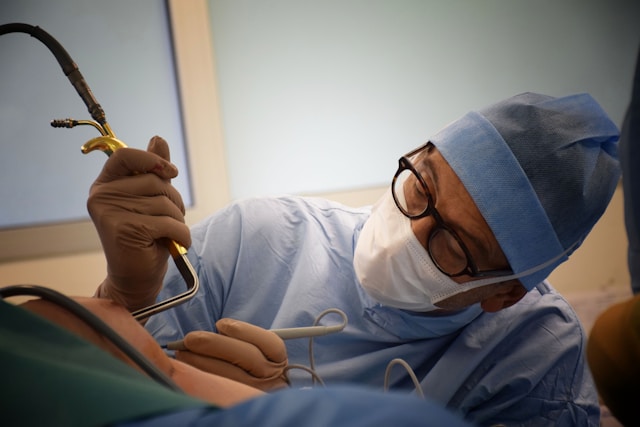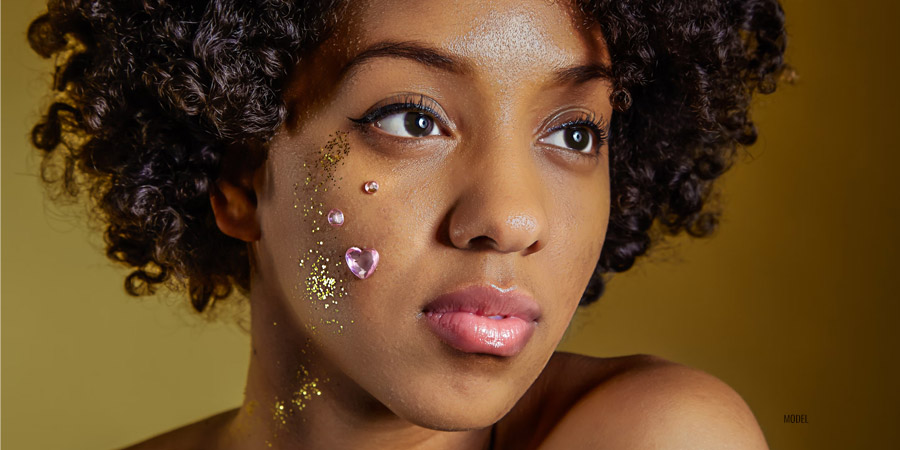Blog
Posted on: July 9th, 2024

Nowadays, planning your cosmetic procedure before moving has never been easier, thanks to virtual cosmetic consultations. This innovation merges surgical skills and the latest technology to offer a seamless planning experience from anywhere. With a simple internet connection, you can connect with top specialists, ensuring your beauty goals are met before you even pack your first box.
The Growing Importance of Virtual Consultations
Virtual consultations have transformed how we approach medical and cosmetic care, making it more accessible than ever. They eliminate geographical barriers, allowing you to consult with experts regardless of your current or future location. This is especially crucial if you’re planning a move; it ensures that your treatment plan is uninterrupted and you receive consistent care. The global appeal of cosmetic procedures means you’re not limited to local expertise, expanding your options to include the best in the field worldwide.

Virtual cosmetic consultations are gaining popularity because of their easy access and practicality.
Types of Procedures Suitable for Virtual Consultations
Virtual consultations can be used to plan a variety of cosmetic procedures, especially in states with a well-developed healthcare industry, like California. Understanding which procedures are most suitable for this approach can help you set realistic expectations.
- Facial Procedures: Rhinoplasty, facelifts, and Botox injections are commonly planned through virtual consultations. These procedures often require detailed visual assessments, which can be effectively done online.
- Body Contouring: Liposuction, tummy tucks, and body lifts can also be planned virtually. Your practitioner can discuss your goals and evaluate your body shape through photos and videos.
- Non-Surgical Treatments: Laser treatments, chemical peels, and other non-invasive procedures are ideal for virtual consultations. These treatments often require less in-person examination and can be easily discussed online
Prepare for Your Virtual Consultation
Choosing the right practitioner is key to getting the most out of your virtual consultation. Look for professionals who have the qualifications and experience to conduct online consultations. Check their reviews and any before-and-after galleries to gauge their expertise remotely. When scheduling your consultation, consider different time zones if consulting with someone far from your current or future home.
Next, prepare for the consultation itself. Ensure you are in a private, well-lit area to facilitate clear visual communication. Have a list of questions and any medical history relevant to your cosmetic goals ready. It’s also wise to consider psychological counseling before cosmetic surgery to address any emotional concerns. This preparation will help you maximize the time with your consultant and ensure all your concerns are addressed.
What Can You Expect During a Virtual Cosmetic Consultation?
During the consultation, your provider will discuss your aesthetic goals, review your medical history, and possibly request close-up photos or direct examinations through video. Be ready to discuss what you hope to achieve and any concerns you might have about the procedure or timing relative to your move. This conversation will help tailor a treatment plan that fits your timeline and ensures optimal recovery.

The consultation is mostly used to explain your goals.
Technological Requirements
For a successful virtual consultation, a stable internet connection and a device with a good-quality camera are essential. Most clinics will have software that is easy to use and secure for medical discussions. Prior to your appointment, test your setup by calling a friend or family member to ensure everything works smoothly. This step avoids technical glitches during your consultation, making the experience stress-free, productive, and more efficient.
Plan Your Procedure Before a Move
When you’re moving, timing is everything, especially when it involves a cosmetic procedure. These consultations make it possible to strategically plan your surgery so it fits perfectly with your relocation schedule. Considering that recovery time is crucial, you wouldn’t want to be in the middle of healing when you need to pack boxes or settle into your new home.
Here are a few key reasons to schedule your procedure before your move:
- Less Stress: Recover in a familiar environment with your current support network.
- Continuity of Care: Maintain contact with the same medical team who understands your case history.
- Better Planning: Allows you to manage recovery time without the added pressure of moving tasks.
Follow-up and Post-Procedure Care
Following up after your procedure is essential; virtual cosmetic consultations ensure your move doesn’t disrupt this process. You can schedule follow-up sessions online to discuss your recovery, manage any concerns, and ensure that healing is on track. This continuity of care is vital for both peace of mind and the success of your cosmetic outcomes.
The Future of Virtual Consultations in Cosmetic Surgery
As we look ahead, the role of virtual cosmetic consultations is only set to grow. Plastic surgery trends indicate a rise in remote healthcare services, with more patients opting for virtual interactions to save time and receive quick feedback. Innovations in virtual reality may soon allow for even more detailed assessments during online consultations.

These types of consultations are the future standard in this industry.
Virtual Cosmetic Consultations Are Gaining Popularity For a Reason
So, if you’re planning to move and considering a cosmetic procedure, evaluate how these consultations can play a crucial role in your planning. They offer a practical, flexible solution that fits your lifestyle, ensuring you don’t have to put your aesthetic goals on hold due to a relocation. Embracing this modern approach not only saves you time but also connects you with the best specialists across the globe. Why wait? Start your virtual cosmetic consultations from the comfort of your current home and step into your new life with confidence.
Posted on: May 30th, 2024

In competitive fields, the impact of a first impression can be substantial, leading many to explore plastic surgery considerations to enhance their professional image and confidence. This article delves into the key aspects one should contemplate before undergoing cosmetic procedures in the context of a career move. We will discuss the role of appearance in professional success, how to evaluate plastic surgery options and the best practices for timing your procedure around your relocation. In addition, we will cover financial considerations, understand cultural norms at your new location, and consider the long-term benefits and risks of such decisions. We aim to provide insightful guidance to help you make informed choices during this significant career phase.
The Role of Appearance in Career Success
In many professional settings, appearance significantly influences first impressions, which can, in turn, affect career opportunities. A polished look often equates to competence and reliability in the minds of employers and colleagues. Industries such as sales, real estate, and hospitality emphasize appearance. Employees in these fields represent the brand directly to customers and clients.
Similarly, in corporate sectors like finance and law, a meticulous appearance conveys professionalism and attention to detail, traits highly valued in these industries. It is not just about adhering to aesthetic norms but also about projecting an image of confidence and preparedness. For professionals moving to new cities, updating their appearance through plastic surgery can be part of a broader strategy to align with these professional standards, making them feel more confident and competitive in a new environment.

Appearance is very important in some industries, so plastic surgery considerations should be on the table if you feel you need it
Plastic Surgery Considerations for Professionals Relocating
Professionals relocating for career advancement often view plastic surgery as a way to enhance their confidence and align their appearance with their professional goals. Moving out of California, a hub for highly competitive industries, may prompt individuals to seek these changes as part of a broader strategy to make a strong first impression in a new city. Additionally, relocating provides the unique benefit of privacy during recovery.
Away from familiar social circles, professionals can undergo procedures and heal without the public scrutiny or professional downtime they might face in their previous environment. This privacy aspect is important, as it allows for a discreet transformation. It enables individuals to reintroduce themselves with renewed confidence. Opting for surgery with a move can symbolize a fresh start, embodying personal and professional rebirth. This strategic decision supports career aspirations but also personal satisfaction and well-being.
Why Complete Your Procedure Before You Relocate
Choosing to complete your plastic surgery in California before relocating offers numerous benefits. California has a high concentration of expert surgeons renowned for their advanced techniques and successful outcomes. This state’s medical facilities are celebrated globally for their excellence in cosmetic procedures, ensuring high-quality results and patient satisfaction. Undergoing surgery in a familiar setting can significantly reduce stress and promote a smoother recovery.
Further, finalizing your procedure in California eliminates the need to navigate a new healthcare system immediately after moving, simplifying the logistical challenges associated with relocating. It also allows for continuity of care, as post-operative follow-ups are conducted by the same team that understands your medical history and surgery details. Strategically, completing your surgery before a move ensures you can start your new chapter free from ongoing medical appointments and be fully ready to embrace new opportunities.
Timing Your Procedure Around Your Relocation
Aligning the timing of your plastic surgery with a major move, especially larger moves across the country, and a job transition demands careful planning. Ideally, schedule your procedure early enough so your recovery does not overlap with the start of your new role. This strategy allows you to heal thoroughly and arrive at your new job feeling refreshed and confident.

Plan timing wisely; consider that it will take a certain period to heal before you can do any work
Financial Considerations and Insurance Implications
Financial planning is crucial when considering plastic surgery considerations for professionals relocating. The costs associated with these procedures can vary widely, depending on the type of surgery and the surgeon’s expertise. Prepare for these expenses and consider how they fit into your overall relocation budget. Besides, insurance coverage for plastic surgery often varies significantly between policies and regions.
Before moving, review your current insurance plan to understand what aspects of your procedure may or may not be covered. It’s also important to research how this coverage might change once you relocate, as local laws and insurance offerings differ. This dual approach ensures you are financially prepared and can avoid unexpected expenses that might disrupt your move and recovery. Planning allows you to manage your finances effectively, providing a smooth transition without added financial stress.

Be prepared for the expensive outcome of your surgery
Cultural Norms and Expectations in Your New Location
Adapting to new cultural norms and expectations is important for professionals relocating. Cultural attitudes towards plastic surgery can vary extensively from one region to another. For instance, while some areas may view cosmetic enhancements as routine or necessary for professional success, others may have more conservative views on altering one’s appearance. Relocating professionals should understand these regional differences to integrate smoothly into their new professional and social circles.
This understanding can influence decisions about plastic surgery and how openly one might discuss such procedures. Researching local attitudes and consulting with locals can provide valuable insights into what is culturally acceptable. It will help you make informed decisions that align with your personal and professional goals while respecting local sensibilities. This approach ensures a respectful and well-adjusted transition into your new environment.
Long-Term Benefits and Risks
Plastic surgery can offer long-term career benefits, especially in fields where personal appearance plays a significant role in professional interactions. Enhancements that align with a person’s self-confidence can lead to improved performance and opportunities in the workplace.
However, it is essential to balance these potential advantages with the health risks and complications that might arise. While surgical interventions are increasingly safe, they still carry inherent risks such as infection, dissatisfaction with results, and the physical stress of recovery. These factors can temporarily, or sometimes permanently, impact an individual’s professional capacity and overall well-being.
Prospective patients must thoroughly research and consider these aspects. They must consult with medical professionals to understand the full scope of potential outcomes. Making informed decisions based on a comprehensive evaluation of the benefits and risks ensures that plastic surgery contributes positively to one’s long-term career and health.
Conclusion
In summary, plastic surgery considerations for professionals contemplating relocation involve multiple aspects. These include evaluating the expertise available and understanding the financial and insurance implications. It also means careful consideration of the cultural norms of the new location. Also, the timing of the surgery around the move and the potential long-term benefits and risks are important. Individuals need to assess these factors and plan meticulously and thoroughly. Such careful preparation ensures that the decision to undergo plastic surgery aligns with personal and professional goals while contributing positively to one’s career trajectory and personal satisfaction.
Posted on: April 29th, 2024
5 Min Read:

The appeal of cosmetic procedures continues to rise globally as individuals seek beauty enhancements, surgical skills, and the latest technology. While many countries offer advanced medical treatments, with Orange County in California at the forefront, international clinics are becoming particularly popular for combining high-quality care with cost-effective solutions. This trend highlights a significant shift in how people approach health and aesthetics, moving beyond their local options to embrace global opportunities in healthcare.
Cost Considerations
The decision to undergo cosmetic surgery in a foreign country often starts with the price. Typically, procedures abroad can cost significantly less than in high-cost countries like the U.S. or the U.K. For example, a rhinoplasty that might cost $5,000 in the U.S. can cost around $2,500 in South Korea or Thailand without compromising quality. This cost difference allows patients to manage their budgets more effectively while receiving top-notch care.
Also, the lower costs abroad can make additional treatments accessible, which might be unaffordable at home. Insurance rarely covers cosmetic procedures, making affordability a crucial factor for many patients. Patients can save on surgeries and non-invasive treatments by choosing clinics in countries with lower living costs.

The appeal of cosmetic procedures abroad is mostly due to the lower costs
Advancements in Technology and Techniques
Internationally, cosmetic clinics compete not just on price but also attract patients through cutting-edge advancements. South Korea and Brazil, for instance, are recognized for their innovation in plastic surgery techniques and technology. These countries invest heavily in medical research and developing new procedures, ensuring they stay at the forefront of cosmetic surgery.
In addition, international clinics often feature specialists who have trained globally and are fluent in the latest surgical practices. This expertise ensures patients can access the best care possible, supported by modern technology and innovative techniques. These factors make international options particularly appealing for those seeking unique or highly specialized treatments.
Quality of Care
When considering international cosmetic procedures, quality of care is paramount. High standards in foreign clinics are maintained through stringent regulations and international accreditation. Many international cosmetic surgery centers obtain certification from global organizations, which helps ensure consistent and safe practices across borders.
Also, prospective patients often review reviews and testimonials before selecting plastic surgeons in a new area. Success stories and positive outcomes shared online can significantly influence the decision-making process. This transparency allows new patients to gauge the level of care and satisfaction from previous clients, providing a layer of trust and assurance.
The Appeal of Cosmetic Procedures: Diverse Treatment Options
As the appeal of cosmetic procedures grows, so does the range of treatments available internationally. Clinics around the world offer a variety of specialized services that cater to both common and unique aesthetic goals. This diversity allows patients to select procedures that are effective and tailored to their specific needs.
- In Japan, skin-lightening treatments are popular, leveraging advanced formulations not widely available elsewhere.
- Brazil is famous for its body sculpting surgeries, including innovative liposuction and buttock augmentation methods.
- In India, non-invasive techniques like cool sculpting are gaining traction, offering patients body contouring options without surgery.
Also, the availability of unique treatments can be particularly appealing to those seeking procedures that align with local cultural standards or aesthetic preferences. Plastic surgery trends differ across regions, and understanding these trends can help patients make more personalized and satisfying choices.
Cultural and Recreational Opportunities
Besides the medical aspects, the opportunity to combine cosmetic procedures with travel is a significant draw. Many patients appreciate the chance to recover in a pleasant and discrete setting, often choosing destinations with excellent medical care and appealing tourist attractions.
- Thailand is known for its beautiful beaches and relaxing resorts where patients can recuperate in privacy after surgery.
- Similarly, Spain offers a blend of historical sites and modern leisure facilities, making it an attractive destination for those undergoing less invasive treatments.
This combination of medical and cultural tourism enhances the recovery experience and adds an element of excitement.

Many want to combine their trip for procedures with leisure
Caption: Many want to combine their trip for procedures with leisure
Regulations and Safety
When opting for cosmetic procedures abroad, safety is a key concern. Reputable clinics abroad adhere to strict regulatory standards to ensure patient safety and high-quality outcomes. These standards are often comparable to, if not exceeding, those found in Western countries.
For example, South Korea has rigorous safety protocols and a government-led accreditation system for cosmetic surgery clinics. Also, patients need to conduct thorough research on potential clinics and surgeons. Seeking counseling before cosmetic surgery can help ensure they are well-informed about the risks and benefits of their chosen procedures.
The Appeal of Cosmetic Procedures Is Only Growing
Innovations in minimally invasive techniques and the development of new materials for implants suggest that more people will consider going abroad for their cosmetic needs.
At the same time, as global regulations become more standardized, confidence in receiving medical treatments overseas will likely increase, further driving the appeal of cosmetic procedures worldwide.

Many people decide to move to another country after they visit it once
Final Thoughts
The appeal of cosmetic procedures at international clinics continues to grow, driven by cost, advanced technology, and the promise of high-quality care. As the industry advances, patients worldwide find more reasons to look abroad for cosmetic care needs. They travel for beauty enhancements that are not just a matter of luxury but a practical decision rooted in value and quality.
Posted on: April 12th, 2024

Have you ever considered how your mind perceives your body, especially when thinking about plastic surgery? Body Dysmorphic Disorder (BDD) is a common concern that often goes unnoticed. It’s a condition where people can’t stop thinking about perceived flaws in their appearance — usually invisible to others. Recognizing and addressing these psychological concerns before plastic surgery is not just important. It’s a step towards ensuring your well-being. In this journey, understanding BDD and seeking psychological counseling before deciding on surgery can make a significant difference in your experience and results.
Understanding Body Dysmorphic Disorder
Body Dysmorphic Disorder (BDD) might seem elusive, but it’s a very real and challenging condition for many. Imagine constantly being preoccupied with a part of your body you see as flawed, even if others don’t notice anything unusual.
That is the daily reality for individuals with BDD. Surprisingly, a significant number of people considering plastic surgery may be living with this disorder. It’s more than just an occasional worry about appearance. It’s an ongoing obsession that can consume one’s thoughts.
Take, for example, someone who sees their nose as disproportionately large despite others not noticing anything out of the ordinary. This perceived flaw becomes a focal point of distress and discomfort for them. Recognizing these feelings and experiences is the first step in understanding BDD.

Body Dysmorphic Disorder makes individuals overconcerned with their looks.
Why Recognizing BDD is Critical Before Surgery?
Identifying Body Dysmorphic Disorder before opting for plastic surgery is more than just a precaution. It’s a necessary step in protecting your mental health and satisfaction with the results. Surgery can significantly alter one’s appearance, but for someone with BDD, the underlying psychological issues may not be resolved by physical changes alone.
In fact, without addressing these issues, the desired outcome of the surgery might not meet the individual’s expectations, leading to further dissatisfaction. For instance, if a person undergoes a procedure to correct a feature they perceive as flawed, they might continue to feel unhappy with their appearance because the root cause is their perception, not the physical trait itself.
That is why psychological evaluation and counseling play a major role in the journey toward plastic surgery. They help align expectations with realistic outcomes, ensuring a more positive experience and outcome.
Identify Psychological Concerns Before Plastic Surgery
Spotting the signs of psychological concerns, like Body Dysmorphic Disorder, before plastic surgery is key to making informed decisions. It’s not always straightforward, but there are certain indicators to watch for. If you’re considering surgery, pause and reflect on the following points:
- Obsession with a Body Part: Are you constantly fixated on a certain aspect of your appearance, feeling that it must be changed at all costs?
- Frequent Mirror Checking or Avoidance: Do you constantly check your reflection or avoid mirrors altogether because you are distressed about your appearance?
- Social Withdrawal: Have you started avoiding social situations or activities you once enjoyed, fearing judgment or criticism about your looks?
- Repeated Procedures: Have you undergone multiple cosmetic procedures but still feel unsatisfied with your appearance?
Recognizing these signs is not about self-diagnosing but understanding when to seek professional guidance. It’s about acknowledging that unaddressed psychological concerns might cloud how you see yourself. This self-awareness can lead to more beneficial outcomes from any decision regarding plastic surgery.

Those with BDD always feel examined by those around them.
Managing Expectations: A Key Step
Setting realistic expectations is a crucial aspect of preparing for plastic surgery. It’s not just about the physical change. It’s about how this change aligns with what you’re hoping to achieve. This step involves open and honest discussions with your surgeon about potential outcomes.
For example, a surgeon can help you understand what is realistically achievable, considering your unique body and health. It’s important to remember that plastic surgery can enhance and improve appearance, but it has limits. Sometimes, what we hope to achieve might not align with what is surgically possible.
That is where the expertise of a skilled surgeon comes in – guiding you to understand the potential and limitations of a procedure. By aligning your expectations with realistic outcomes, you’re more likely to feel satisfied and at peace with the results, making your journey through plastic surgery a more positive and fulfilling experience.
Strategies for Dealing with Psychological Concerns
When facing psychological concerns like Body Dysmorphic Disorder before plastic surgery, adopting effective strategies is important. One vital step is seeking professional help. Therapists and counselors specializing in these issues can offer invaluable support and guidance.
Apart from such specialized centers, other strategies include engaging in mindful practices, such as meditation or yoga, which help foster a healthier body image and reduce anxiety. Equally important is having honest conversations with your surgeon about your psychological state, as this can influence the surgery decision and outcome. By combining professional therapy, personal wellness practices, and open communication with your healthcare provider, you’re setting yourself up for a more informed and healthier journey in considering plastic surgery.

Counseling and therapy are important for those facing psychological concerns like BDD.
The Role of Support Systems
A strong support system is invaluable when deciding on plastic surgery. Family and friends can offer emotional support and practical assistance, helping individuals feel more confident and reassured in their choices.
In addition, support groups of individuals who have undergone similar experiences can provide a sense of belonging and understanding, reducing feelings of isolation. By surrounding oneself with caring and supportive individuals, the journey towards plastic surgery becomes less daunting and more manageable, ultimately leading to a more positive and fulfilling outcome.
Embrace Confidence with a Clear Mind
Understanding and addressing psychological concerns before plastic surgery is the key to a successful and fulfilling experience. By recognizing the signs of Body Dysmorphic Disorder and seeking appropriate support and counseling, individuals can approach surgery with confidence and clarity. Managing expectations, adopting effective coping strategies, and leaning on supportive networks can make all the difference. After all, your well-being matters just as much as your desired appearance. With the right mindset and support, you’re equipped to embrace your journey towards plastic surgery with confidence and positivity.
Posted on: March 18th, 2024

California, known for its glittering entertainment industry, often sets global fashion, film, and music trends. But beneath this allure lies a less glamorous reality: the intersection of substance abuse and body image pressure in California’s entertainment industry. This complex issue demands our attention, not only in California but worldwide.
The Reality of Body Image Pressure in the Entertainment Industry
The pressure to maintain a certain physical appearance is immense in California’s entertainment industry. Actors, models, and musicians are often expected to conform to unrealistic beauty standards. This relentless pursuit of an idealized body image can lead to extreme measures, where the impact goes beyond physical health, affecting mental well-being, too.
The Role of Media and Public Perception
Media portrayal plays a significant role in perpetuating these standards. The constant bombardment of ‘perfect’ body images through movies, TV shows, and advertisements creates a twisted perception of normalcy. Young, impressionable individuals in California, dreaming of making it big in the industry, are particularly vulnerable to these portrayals.
This continuous exposure shapes their goals and self-esteem, often leading to a relentless chase for physical perfection. The role of social media amplifies this effect, where instant feedback and comparison are just a click away, further embedding these unrealistic standards in the collective psyche.

Media shapes public perceptions
The Plastic Surgery Phenomenon
The appeal of plastic surgery in the entertainment industry is undeniable. In a world where one’s appearance can significantly impact career prospects, the temptation to ‘enhance’ one’s features is overwhelming. Celebrities often find themselves succumbing to the pressure of undergoing cosmetic procedures – sometimes to the point of addiction. Here are some possible reasons individuals might turn to plastic surgery for comfort.
Body Dysmorphia Syndrome
Body Dysmorphia Syndrome (BDS) is a mental health disorder characterized by obsessive focus on perceived flaws in one’s appearance, often not noticeable to others. In Hollywood, where physical appearance is intensely scrutinized, individuals with BDS find themselves in a particularly vulnerable position. The constant exposure to idealized beauty standards exacerbates their condition, leading many to seek solace in plastic surgery.
Obsessive-Compulsive Disorder (OCD)
OCD can sometimes manifest in obsessions about one’s appearance. This may lead to compulsive behaviors like seeking surgery to alleviate the distress caused by these obsessions.
Eating Disorders
Conditions such as anorexia nervosa, bulimia nervosa, and other eating disorders often involve a distorted body image. People with these disorders may pursue plastic surgery to achieve a body shape that aligns with their distorted self-image.
Depression and Anxiety
In some cases, individuals with depression or anxiety may seek plastic surgery as a way to improve their self-esteem or alleviate their depressive or anxious symptoms. However, without addressing the underlying mental health issues, surgery may not provide the psychological relief expected.
Substance Abuse: A Dangerous Coping Mechanism
To cope with the immense pressure of maintaining a specific body type, individuals may turn to substance abuse. The intersection of substance abuse and body image pressure in California’s entertainment industry can be detrimental to many. The use of drugs or alcohol can start as a means to control weight, manage stress, or escape from the harsh realities of the industry.
This behavior is often glamorized or normalized within certain circles, masking the serious risks involved. Substance abuse, initially seen as a tool for coping or fitting in, can quickly spiral into addiction, further complicating an individual’s physical and mental health challenges.

An unhealthy body image can lead to substance abuse and body image pressure in California
Support Systems and Professional Help
For those struggling with substance abuse and body image pressure, seeking professional help is of the utmost importance. Therapy, support groups, and rehabilitation programs can provide guidance and support.
Promoting Body Positivity
There’s a growing movement toward body positivity, advocating for the acceptance of all body types. This movement challenges traditional beauty standards and encourages a healthier and more inclusive industry. Some in the industry have even opted for the removal of implants and reversing certain surgical enhancements.
It’s not just about changing perceptions; it’s about transforming industry practices – from casting decisions to marketing strategies. This shift toward inclusivity benefits those within the industry. It sends a powerful message to the audience, promoting a more accepting and diverse view of beauty that resonates with real people.
Educating the Younger Generation
Awareness programs in schools and communities can help build resilience against these pressures. These programs should focus on the unrealistic standards set by the industry and teach critical media literacy skills to help young people analyze and understand the content they consume.

Younger generations need to be educated on mental health and body positivity
It’s also important to encourage open discussions about self-esteem and mental health, equipping the younger generation with the tools to navigate the challenges of body image and substance abuse in a more informed and healthy way.
Conclusion on the Substance Abuse and Body Image Pressure in California’s Entertainment Industry
The issue of substance abuse and body image pressure in California’s entertainment industry is complex. It requires a collective effort from individuals, the industry, and society to bring about lasting change. Understanding and addressing these challenges can pave the way for a healthier, more inclusive entertainment industry that celebrates diversity and real beauty.
























